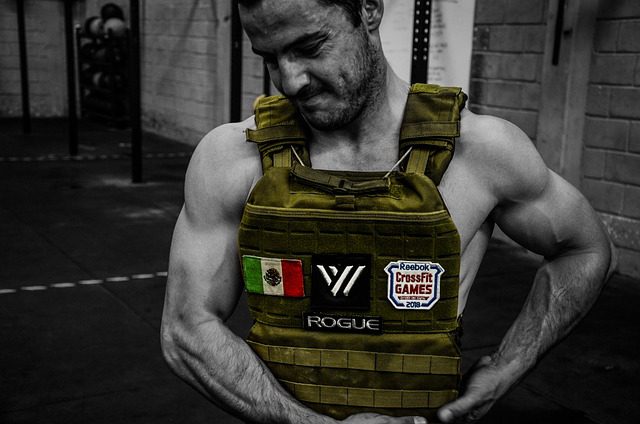Beyond the Gym: Tactical Training for Real-World Preparedness
Many fitness enthusiasts focus solely on gym routines and lifting weights, but what about preparing for real-world situations? Tactical training takes fitness to a new level by combining physical exercise with practical skills such as self-defense, emergency preparedness, and survival techniques.
Whether you’re an athlete, military personnel, law enforcement officer, or simply looking to be better prepared for unexpected situations, tactical training can help you build mental and physical toughness, improve situational awareness, and boost overall confidence.
While this article may not take you from couch potato to commando, it will at least give you a taste of the things you need to think about and start implementing into your tactical training to prepare for real-world scenarios where your fitness level is going to be tested and pushed to the max.
What exactly am I referring to? You can fill in the box with your own thoughts, but we want the ability to survive a conflict, gunfight, or similar situation we find ourselves in. It’s where your heart rate becomes elevated, you’ll need maximum strength, agility, the ability to move quickly, and overall survivability.
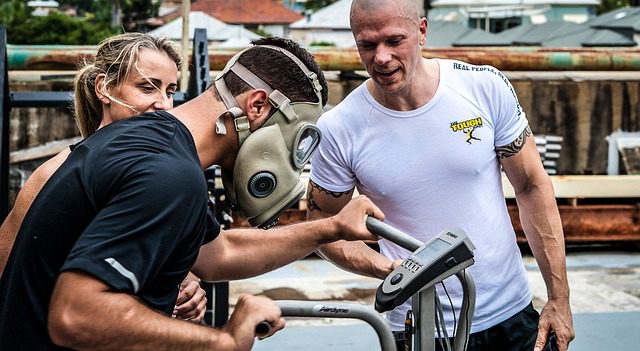
Here’s the reality: The criminal chooses the time and place for an attack — not you. So, you need to be prepared to act at a moment’s notice to increase your chance of survivability.
In this article, we are going to dive deeper into the subject, and by the end, you should have a great guide on things you need to focus on and work on improving.
Disclaimer: It is recommended that you speak with your doctor before engaging in any sort of exercise or fitness program to ensure you are healthy enough to do so.
Table of contents
- What is Tactical Training?
- How Does Physical Fitness, Strength, and Endurance Play into Survivability?
- A Strong Person is Hard to Kill: The Need for Tactical Training & Workouts
- What Equipment Can You Use for Tactical Training and Workouts?
- What Types of Programs Make Up Tactical Training and Workouts?
- Can You Incorporate Live Fire Shooting with Tactical Training Workouts?
- Tactical Training Can Help Keep You in the Fight and Win
What is Tactical Training?
While many reading this may have come here thinking our use of the term “tactical training” is going to the range to work on your firearm skills and sending live ammo down range. And while that definition may be accurate in that specific scenario, we are going to look at tactical training in the sense of your overall health and fitness profile that play a role in your ability to survive threats.
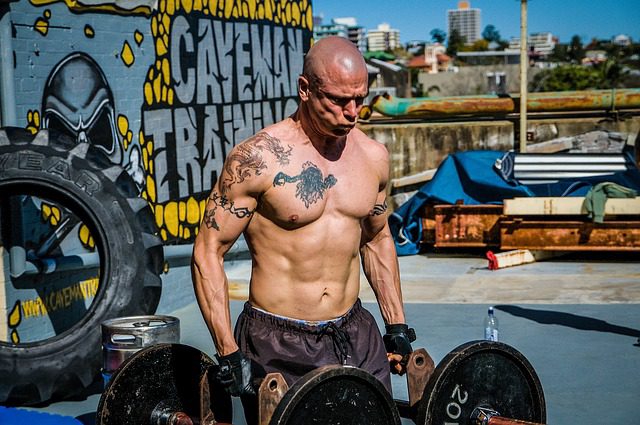
Tactical training is a type of physical training that is specifically designed to prepare individuals for the demanding physical requirements of the military, law enforcement, and other tactical professions. This type of training typically involves a combination of cardiovascular endurance, strength, and power, as well as skill-specific drills and exercises.
One of the critical benefits of tactical training is that it helps individuals develop the physical and mental toughness needed to perform their jobs effectively or potentially save a life if a deadly threat is encountered. This can be especially important for individuals working in high-stress, physically demanding environments, such as military and law enforcement, where their lives may be on the line.

Tactical training can also help improve overall physical fitness and performance. By developing strength, endurance, and power, individuals can become better equipped to handle any situation thrown before them and not gas out or be overpowered.
There are many different ways to incorporate tactical training into your routine. One effective approach is to start with a solid foundation of cardiovascular endurance and strength training, and then progress to more advanced exercises and drills that are specific to your profession. We’ll show you an example of a tactical training workout you can do at home later in this article.
Related Article: Zach Bush of Definitive Training Solutions — Be Harder to Kill
It’s important to remember that tactical training should be progressive, meaning that you should aim to gradually increase the intensity and complexity of your workouts over time. This will help you continue to improve and challenge yourself and is commonly referred to as “progressive overload.” You can progressively overload your tactical training by incorporating more sets, more reps, or more weight on exercises. The key is to constantly push yourself. Using a logbook would be beneficial for tracking your progress. Here is a detailed article I wrote on using a workout log.
Incorporating rest and recovery into your training routine is also crucial. This will allow your body time to repair, adapt, and help prevent burnout and injury. Never do the same workout two days in a row and never hit the same body parts two days in a row. You want to ensure there are, at a minimum, 24 hours between workouts where you hit the same body parts.
Below is some content I wrote and recommended reading that touches on proper recovery that can help you speed up the process.
- Should You Be Using an Ice Bath for Mental & Physical Recovery?
- Massage Guns: A Recovery Tool You Never Thought You Needed
- Self-Massage Reduces Stress and Helps Muscle Recovery
- Muscle Recovery After 50: Effective Ways to Feel Less Sore
- Can a Weighted Blanket Help Improve Your Rest and Recovery?
- Try These 9 Strategies to Improve Recovery Following Workouts
- 6 Ways You Can Improve Your Post-Workout Recovery
Sleep is also an essential piece of the equation when it comes to tactical training and your results. You should strive for seven hours of quality sleep each night. If you don’t make sleep a priority, it can throw off your recovery, hormones, and energy levels. Take your sleep as seriously as you do your tactical training.
Below is some additional content I wrote and recommended reading surrounding sleep that can help you in many different ways:
- Is the 8-Hour Sleep Rule a Myth or Truly Beneficial?
- Sleep Deprivation Is Making You Fat
- Should You Monitor Your Sleep Each Night and If So How?
- Want Better Sleep? Avoid Consuming These Things at Night
- 8 Ways To Get A Better Night’s Sleep
- How Lack of Sleep Hinders Coping Skills and Decision Making
- Sleep and Weight Loss: How to Hit Your Goals Faster!
Overall, tactical training is an effective way to improve physical and mental toughness, as well as overall physical performance. By following a well-rounded training program, individuals can better prepare themselves for the demands of their profession and perform at their best.
How Does Physical Fitness, Strength, and Endurance Play into Survivability?
I’m going to call it as I see it, and it may hurt your feelings, but it’s the truth, and you need to hear it. If you’re fat, slow, and weak, you are a liability to everyone around you — including yourself. You will become a victim and may potentially put yourself and your family in harm’s way if you don’t make a change and implement the tactical training strategies found in this article.
Related Article: Do Civilians Need a Plate Carrier or Are They Just Larping?
Physical fitness, strength, and endurance can all significantly affect someone’s ability to survive in challenging or dangerous situations.
For example, if an individual faces a physical challenge, such as fleeing from a natural disaster, running from a potential threat, or carrying a heavy load over a long distance, having good cardiovascular endurance can help them sustain the necessary physical effort.
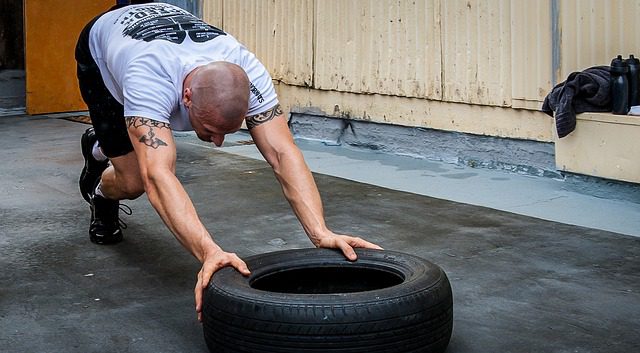
Similarly, having good physical strength can allow an individual to lift and move heavy objects, climb over obstacles, and defend themselves against attackers. Again, you don’t want to become a victim. So, utilize tactical training to provide you with an advantage over potential threats and attackers.
In addition to the physical benefits, good physical fitness can also have mental and emotional benefits that can impact survival ability. For example, being in good physical shape can help an individual maintain a clear mind and a positive outlook, which can be crucial in survival situations where decision-making and problem-solving skills are crucial.
I wrote a book that I’d highly recommend you pick up and read that also includes comments and insight by some of the top firearms trainers in the United States called Fit for Survival. It is available in both e-book and audiobook.
A Strong Person is Hard to Kill: The Need for Tactical Training & Workouts
You’ve heard that saying before. Many think it’s overplayed, but it’s the truth. And tactical training can help you get stronger — both physically and mentally.
There are a few reasons why being physically fit and strong can make someone more resistant to being killed in difficult or dangerous situations:
1. Physical fitness and tactical training can improve physical resilience
Being in good physical shape by implementing tactical training can help an individual handle the physical stresses of a difficult situation, such as being able to carry objects and people over long distances if need be or withstand physical injuries.
2. Strength can help defend against attackers
Good physical strength by focusing on tactical training can also be useful in defending oneself against attackers or assailants. Someone who is physically fit and strong may be better able to defend themselves and escape from a dangerous situation.
3. Physical fitness can improve mental and emotional resilience
In addition to the physical benefits, being in good physical shape can also improve mental and emotional resilience. For example, being physically fit can help an individual maintain a clear mind and a positive outlook, which can be important in survival situations where decision-making and problem-solving skills are crucial.
What Equipment Can You Use for Tactical Training and Workouts?
There are many types of equipment that can be used for tactical training and workouts, depending on the specific goals and focus of the training. Some common pieces of equipment that may be used in tactical training and workouts include:
· Resistance bands
Resistance bands are lightweight and portable, making them a convenient tool for tactical training and workouts. They can be used for various strength and conditioning exercises, such as squats, lunges, and rows.
· Kettlebells
Kettlebells are weighted balls with a handle that can be used for a variety of strength, power, and cardiovascular exercises. They are a versatile tool that can be used for exercises such as swings, squats, and presses.
· Medicine balls
Medicine balls are weighted balls that can be used for many different exercises, such as throws, squats, and core work. They are a valuable tool for developing power and strength.
· Jump ropes
Jump ropes are a simple and effective tool for improving cardiovascular endurance and footwork. They can be used for jumping exercises, as well as for coordination and agility drills.
· Suspension trainers
Suspension trainers are a type of bodyweight training equipment consisting of straps and handles that can be used for various exercises, such as rows, presses, and squats. They are a portable and versatile tool that can be used for full-body workouts. Think along the lines of TRX straps.
In addition to these specific pieces of equipment, it’s also important to have access to a variety of other training tools, such as weights, dumbbells, and barbells, to allow for a well-rounded tactical training and workout session. While you don’t need any equipment to see progress, having something is better than having nothing.
What Types of Programs Make Up Tactical Training and Workouts?
One workout that individuals can follow to improve their tactical fitness is as follows:
1. Warm up
Start with 5-10 minutes of light cardio, such as jogging or jumping jacks, to get the blood flowing and prepare the body for the workout.
2. Cardiovascular endurance
Next, focus on building cardiovascular endurance with running, cycling, or rowing exercises. Aim for at least 20 minutes of continuous cardio at a moderate intensity.
3. Strength training
Incorporate strength training exercises such as squats, lunges, push-ups, and pull-ups to build functional, whole-body strength. Choose weights that are challenging but allow for proper form. Perform 3-4 sets of 8-12 reps for each exercise.
4. Power training
To improve explosive power, include exercises such as plyometrics (e.g., box jumps) and medicine ball throws in your routine. Aim for 3-4 sets of 6-8 reps for each exercise.
5. Skill-specific drills
Finally, incorporate drills and exercises that are specific to your profession or the demands of your job. This might include practicing carrying heavy loads, climbing, crawling, or other activities that are specific to your line of work.
Remember, your tactical training should be progressive, meaning that you should aim to gradually increase the intensity and complexity of your workouts over time. You also don’t want to neglect proper rest and recovery to allow your body adequate time to repair and adapt.
Below is another example of a tactical training workout you could use at home if you had some very basic equipment. This workout is fairly basic, but that’s what many people need to start with because their fitness level has not been a priority for years.
| Exercise | Total Sets | Reps | Rest Between Sets | Notes |
| Push-Ups | 3 | 15 | 30 seconds | |
| Pull-Ups | 3 | 10 | 60 seconds | Use a weighted vest if available |
| Lunges | 3 | 12 | 45 seconds | Hold dumbbells in each hand |
| Plank | 3 | 45 seconds | 30 seconds | Rest on your elbows and toes |
| Burpees | 3 | 10 | 60 seconds | |
| Running Intervals | 5 | 1 min sprint, 1 min walk/jog | 30 seconds | Use a track or open field. Sprint for 1 minute, then jog for 1 minute before sprinting again |
This workout includes exercises that are commonly used in tactical training, such as push-ups, pull-ups, lunges, planks, burpees, and running intervals. It’s designed to improve strength, endurance, and overall physical fitness. The number of sets, reps, and rest periods can be adjusted based on individual fitness levels and goals. It’s important to warm up properly before starting this workout and to cool down/stretch afterward to avoid injury.
Can You Incorporate Live Fire Shooting with Tactical Training Workouts?
There are a few ways to incorporate live-range firearms shooting with physical fitness training. It should be noted that you need to follow the rules of the range you’re a member of. Do not include movement and physical fitness into your tactical training at the range if it’s not permitted.
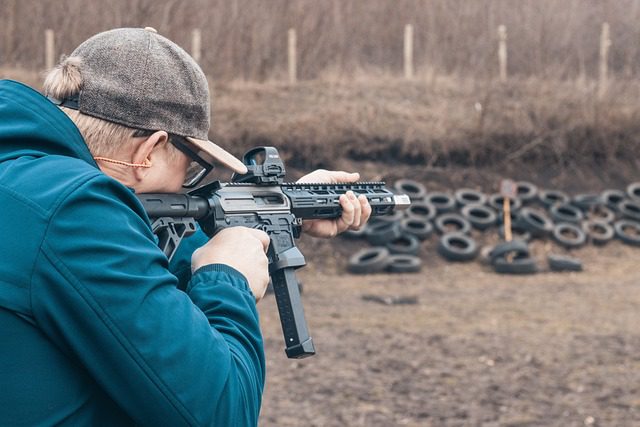
Also, ensure you are being safe at all times while incorporating live fire shooting with your tactical training workouts (be sure to have some sort of EDC trauma kit on your person or close by in your range bag). Below are some ways you can incorporate live fire shooting into your range routine:
1. Incorporate shooting drills into your tactical training workout routine
One way to combine shooting and physical fitness is to incorporate shooting drills into your workout routine. For example, you could set up a shooting range and perform shooting drills such as draw and shoot drills or movement and shooting drills. This could be something like sprinting up to the line and engaging a target. You could then walk back a given distance, do some push-ups, and then sprint to the line again before engaging the target down range. Get creative with your tactical training and keep things fun.
2. Use shooting as a form of cardio
Shooting can be a physically demanding activity, especially when performed at a fast pace, by utilizing multiple targets where transitions are needed, and movement is involved. Incorporating shooting into your cardio routine can be a fun and effective way to increase your heart rate and improve your cardiovascular endurance.
3. Use physical fitness and tactical training to improve shooting performance
Physical fitness training can also help improve shooting performance by increasing strength, endurance, and overall physical performance. For example, exercises such as push-ups, squats, and lunges through your tactical training workouts can help improve upper body and core strength, which can be beneficial for shooting stability.
Tactical Training Can Help Keep You in the Fight and Win
By improving your strength, power, stamina, endurance, and overall fitness level, you can put yourself in a better position to stay in the fight and win. Again, stronger individuals are harder to kill.
Don’t be a victim. Take your tactical training seriously, and don’t be a liability to yourself and those around you. Put in the time and reps. Your life may very well depend on it one day.


*Disclosure: This article may contain affiliate links or ads, which means we earn a small commission at no extra cost to you if you make a purchase through these links. These commissions help support the operation and maintenance of our website, allowing us to continue producing free valuable content. Your support is genuinely appreciated, whether you choose to use our links or not. Thank you for being a part of our community and enjoying our content.
PLEASE CONSIDER SHARING THIS ON YOUR SOCIAL MEDIA TO HELP OTHERS LEARN MORE ABOUT THIS TOPIC. SIMPLY CLICK BELOW!

